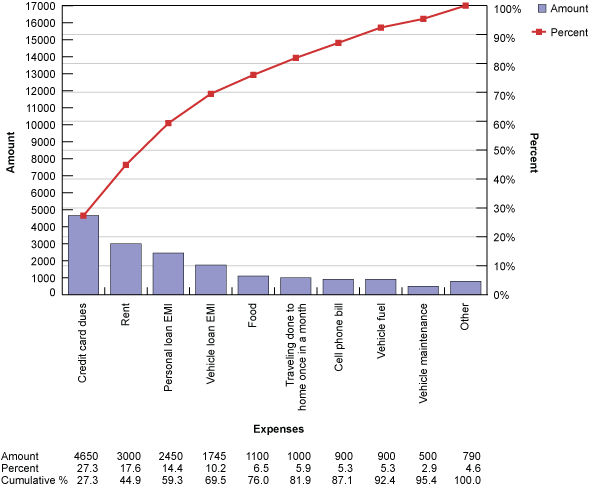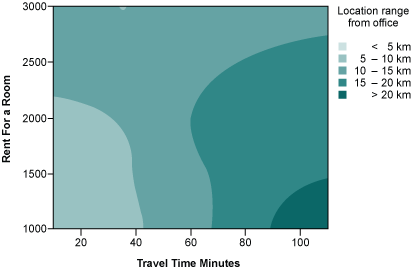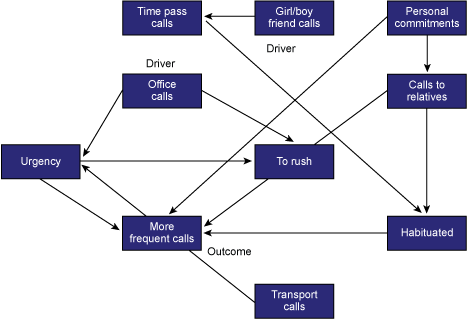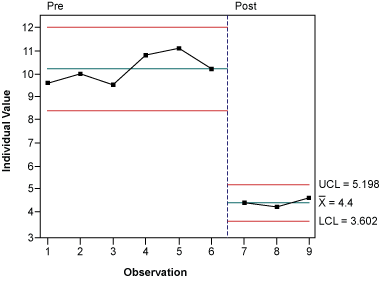
Many people have experienced the pinch of money from time to time. As a Black Belt, I decided to use Six Sigma to aid in managing my money, and conducted a project to lower my expenses.
Many people have experienced the pinch of money from time to time. Despite earning more income, expenses, as well as inflation and cost of living, also seem to be proportionally scaling to the same heights. While being frugal can help minimize expenses, it is more important to properly manage money.
As a Black Belt, I decided to use Six Sigma to aid in managing my money – after all, Six Sigma is widely accepted and has been implemented across various industries for many years. Thus, I commenced a Six Sigma project on managing expenses. This project is based on my own experience; all the data, inputs and outputs are related to my life.
Define
I began this phase by creating a suppliers, input, process, output [SIPOC] chart and a high-level process map. The process map showed how my income was received and how it was spent on various expenses; the map also showed when credit cards and loaned were used if there was a shortage of income.
Next, I created a critical-to-quality (CTQ) tree to categorize the expenses as fixed or variable. Fixed expenses included rent and equated monthly installments (EMIs); variable expenses included water bills, electricity bills, cell phone bills, traveling expenses and vehicle maintenance.
The problem statement, written in the project charter, was: “There is a high proportion of spending compared to the income received.” The scope of the project included monthly salary, loans and credit cards; perks, investment returns, compensation and lottery winnings were not considered as part of the income scope. The goal statement was to reduce personal expenses by 50 percent. I estimated the financial benefits of the project would be the saving of a few thousand Indian rupees every month. I also allocated a timeline for the project: one month each for the Define, Measure and Control phases, and two months each for Analyze and Improve.
Measure
During this phase, I collected data for all expenses incurred, income received, and credit card and loans received. I created a Pareto chart to compare the different causes of expense (Figure 1)
Figure 1: Pareto Chart of Expenses

Out of the types of expenses, only seven causes were considered for improvement. These seven expenses were categorized as controllable or uncontrollable. Personal loan EMI and vehicle loan EMI were considered uncontrollable expenses because they needed to be paid every month without any change in the regular payment. The controllable factors were credit card dues, rent, food, traveling done to home and cell phone bill. I took these on for further study and prepared an I-chart that highlighted my average controllable expenses as 10,858 thousand rupees per month. Credit card dues were further drilled down by using a Pareto chart, from which interest charges, EMI and late-fee charges were taken into consideration.
Analyze
In this phase I created a cause-and-effect diagram for credit card usage. Out of all the causes listed, only two were considered after making a control-impact matrix of these causes. They were:
1. Blindly believed the credit card statement
2. Buying unwanted stuff frequently
Analysis for the first cause was the rate of interest and charges that were charged were exorbitant; there were also a few unknown charges listed in the statement that I had ignored. The analysis for the second cause was that I bought unwanted dress materials from garment companies because of provoking advertisements, such as Buy 2 get 3 free and Stock clearance sale.
I conducted rent analysis by using a contour plot chart considering vital factors: the location of apartment, rent cost in Indian Rupees, travel cost in Indian Rupees to commute from apartment, and travel time in minutes to commute from apartment. I found that the farther the apartment is from my office, the more time is lost. This is depicted with the light blue color, getting darker from left to right as the location ranged (Figure 2).
Figure 2: Contour Plot of Location Range vs. Rent for a Room, Commuting Time in Minutes

Apartments considered near to the city (8 to 15 kilometers range) were pretty expensive, as the rent ranged from 2,000 INR to 3,000 INR. I used a failure mode and effects analysis (FMEA) to analyze rent. It showed that there was a high influence from friends in the selection of my pre sent apartment, which resulted in more dependency for a room within 8 to 15 kilometers of the city, leading to high rent payment.
I also conducted food analysis using a cause-and-effect diagram, which showed that having office food, junk food and weekly parties were the major contributors to paying heavily for food. For these top three contributors, I conducted a five why analysis. I determined that office food was scantier and more expensive compared to the prevailing market price of the food. Junk food was often consumed due to mismanagement of time and peer’s influencing to skip lunch and go for snacks, which resulted in consuming more junk food – and heavy spending on medicines and the gym to compensate. Weekly parties was one more major cause for spending higher. The parties require going to the center of the city to go to a restaurant and paying for parking fees and charges.
Travelling to my hometown was the next-highest reason for spending on the Pareto chart. Uneven booking of travel tickets, taxi fare and unplanned shopping were the three top contributors to travel expenses. Five why analysis showed that the major reasons for these expenses were unscheduled booking of tickets, paying of high fare due to last moment booking of tickets, and last-minute gift shopping, which meant paying higher amounts due to shortage of time to search for competitive stores available in the market.
I conducted cell phone bill analysis using an interrelationship diagram (Figure 3). Office calls and girlfriend calls were the critical reasons for frequent calls. Office calls were made to a landline and calls made to girlfriend were not made to a local number; my current cell phone plan wasn’t designed for calling to landlines or calling a non-local number. My present plan was best suited for calling cell phones within the local province or state.
Figure 3: Interrelationship of Cell Phone Calls

Improve
In this phase I created the improvement plan. As part of the plan, credit card usage was taken into consideration as priority. I thought about clearing off the credit card dues by taking a personal loan, as this would reduce the burden of paying higher interest rates (interest rates for a personal loan are much more economical). I decided to go that route.
The next action item was to cut down high rent. In the root cause analysis, I found that I paid higher rent for staying in city and my location also caused time lost commuting to the office. I planned to move to an apartment with lower rent that was very near to the office.
I also planned to prepare food at home and carry it to the office, as food near the office was scantier and uneconomical. Also, by making this effort to pack a meal, it made me less likely to skip lunch and buy snacks. I planned to move weekly parties to friend’s houses rather than rushing to a restaurant in the center of the city.
I planned to schedule travel home well in advance by keeping reminders and alerts in cell phones and calendars. This meant that tickets and gifts could be purchased at ease and at an economical price.
I also changed my cell phone plan to one with better rates for making calls to landlines and other states, as most of my calls were to office landlines and to my girlfriend who was staying in another state.
I planned to implement the improvement actions in a month’s time, and collect data again three months after the improvements were made.
Control
In this phase, I compared the six months of pre-improvement expenses data with the three months of post-improvement data (Figure 4).
Figure 4: I-chart of Expenses Data Pre- and Post-improvement

After implementing all the action items, my average expenses shifted from 10.3 thousand to 4.4 thousand per month. I had successfully met the goal statement of 50 percent reduction in expenses, and have gone on to sustain it by building controls for each of the solutions using an FMEA.
About the Author: Raman Pushkar is a Black Belt and a consultant with Anexas Consultancy Se in Bangalore, India. Before this assignment he worked as Process Supervisor in Deutsche Bank Group in Bangalore and as Senior Quality Analyst in Ness Technologies in Hyderabad, India. He can be reached at [email protected].